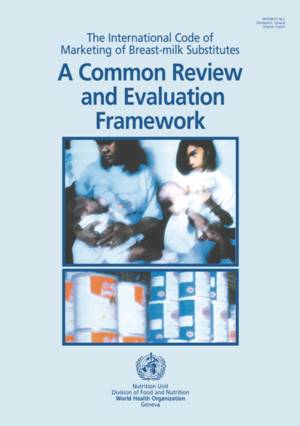
- Afhalen na 1 uur in een winkel met voorraad
- Gratis thuislevering in België vanaf € 30
- Ruim aanbod met 7 miljoen producten
- Afhalen na 1 uur in een winkel met voorraad
- Gratis thuislevering in België vanaf € 30
- Ruim aanbod met 7 miljoen producten
Zoeken
€ 24,45
+ 48 punten
Omschrijving
Sets out a carefully developed - and extensively tested - methodology for use by authorities in countries when evaluating their action to implement the International Code of Marketing of Breast-milk Substitutes. The framework, which can be adapted as appropriate, offers a standardized method of information and data collection for monitoring progress over time. The Code was adopted in 1981 with the aim of contributing to "the provision of safe and adequate nutrition for infants, by the protection and promotion of breast-feeding and by ensuring the proper use of breast-milk substitutes, when these are necessary, on the basis of adequate information and through appropriate marketing and distribution." During the period 1990-1991, WHO provided technical support to 14 countries that had indicated a desire to undertake an in-depth review and evaluation of their own experiences in giving effect to the Code. During this review, governments used a common review and evaluation framework, prepared by WHO. The original framework has subsequently been revised and expanded in the light of experience and lessons learned in other countries, including field tests in Ecuador and Thailand. The resulting common framework is presented in full detail in this volume, which follows the basic structure of the Code. Each of the eleven articles is covered in separate sections with three parts: a summary of the main focus, a description of critical issues, and suggested key informants. Use of the framework is greatly facilitated through the inclusion of numerous sample questionnaires.
Specificaties
Betrokkenen
- Auteur(s):
- Uitgeverij:
Inhoud
- Aantal bladzijden:
- 148
- Taal:
- Engels
Eigenschappen
- Productcode (EAN):
- 9789241595278
- Verschijningsdatum:
- 1/01/1996
- Uitvoering:
- Paperback
- Formaat:
- Trade paperback (VS)
- Afmetingen:
- 210 mm x 297 mm
- Gewicht:
- 371 g

Alleen bij Standaard Boekhandel
+ 48 punten op je klantenkaart van Standaard Boekhandel
Beoordelingen
We publiceren alleen reviews die voldoen aan de voorwaarden voor reviews. Bekijk onze voorwaarden voor reviews.








